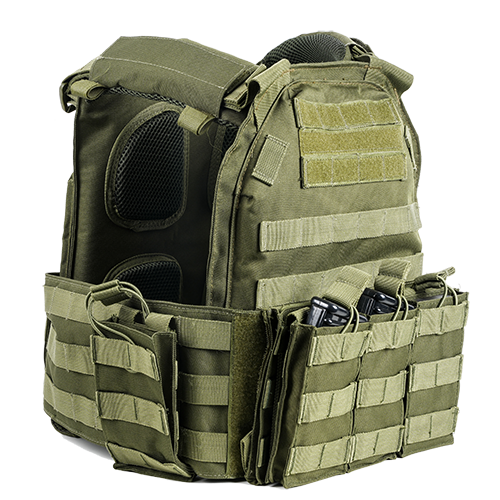Bulletproof vests, as a crucial safety equipment, have always been a topic of curiosity due to their high prices. This article delves into the reasons behind the expensive cost of bulletproof vests, analyzing factors such as materials, manufacturing processes, and research and development, to provide readers with a comprehensive understanding of the complex elements involved.
1.High Material Costs:
Point blank ballistic vest derive their high cost primarily from the utilization of advanced materials, each possessing unique ballistic characteristics but also accompanied by elevated production costs.
- High Molecular Weight Polyethylene Fiber:
Bulletproof Characteristics: High molecular weight polyethylene fiber is a commonly used material in police ballistic vest, known for its outstanding tensile strength and toughness. This material rapidly disperses impact energy when subjected to external forces, preventing bullets or shrapnel penetration.
Cost Factors: The production of high molecular weight polyethylene fiber involves a special process under high temperature and pressure to ensure it attains sufficient strength and impact resistance, contributing to its relatively high manufacturing cost.
- Ceramic Composite Materials:
Bulletproof Characteristics: Ceramic composite materials are typically employed as the rigid protective layer in bulletproof vests. The hardness and rigidity of ceramics enable them to swiftly disrupt projectiles, dispersing and slowing down bullets effectively.
Cost Factors: The preparation of high-performance ceramic composite materials necessitates precise chemical synthesis and processing techniques, raising the inherent cost of the materials.
- Metal Alloys:
Bulletproof Characteristics: Metal alloys are commonly used in best bulletproof vests to provide strength and structural support. They effectively resist penetration from knives and shrapnel, adding an extra layer of protection to the overall structure.
Cost Factors: Metal alloys usually undergo complex alloy formulation and heat treatment processes to ensure they possess both sufficient hardness and toughness. These preparation processes contribute to the manufacturing cost of metal alloys.
2.Complex Manufacturing Processes:.jpg)
The manufacturing process of bulletproof vests is a precision-oriented and intricate craft aimed at ensuring their effectiveness in providing optimal protection during critical moments. The general manufacturing process of bulletproof vests involves several key steps:
- Material Preparation:
The first step in manufacturing bulletsafe is the meticulous selection and preparation of high-tech materials. These materials typically include high molecular weight polyethylene fiber, ceramic composite materials, and metal alloys. Manufacturers must ensure that these materials meet high-quality standards, as material quality directly impacts protective performance.
- Cutting and Layering:
Once materials are prepared, the next step involves precise cutting. Each layer of material must undergo accurate cutting according to design specifications to ensure the best protective effects. After cutting, various material layers are stacked in a specific order. This layering process is crucial in determining the structure and performance of the protective layers.
- Sewing:
After cutting and layering, high-strength stitching is required to bind the layers together. This demands a highly precise sewing process to ensure the overall structural stability. In the sewing process, manufacturers often utilize specialized sewing machinery to ensure each stitch conforms to design standards.
- Coating and Lamination:
Some bulletproof vests undergo coating and lamination processes to enhance their water resistance, abrasion resistance, and stain resistance. This step helps protect the bulletproof vest from external environmental factors and extends its lifespan.
- Quality Inspection:
Upon completion of manufacturing, bulletproof vests undergo rigorous quality inspections. This includes checking the quality of each protective layer, the durability of stitches, and the overall structural integrity. Only vests that pass stringent inspections are allowed into the market.
The complexity of the entire manufacturing process requires manufacturers to possess highly specialized equipment and skilled technical workers. Each step must be executed with precision to ensure that bulletproof vests can provide reliable protection under various adverse conditions. This intricate manufacturing process directly influences the price of bulletproof vests, making them both expensive and crucial life safety equipment.
3.Constraints from Research and Development Investment and Market Size:.png)
The design and testing of bulletproof zone demand substantial research and development investments to adapt to evolving weapons and attack methods. However, the relatively small market for bulletproof vests prevents manufacturers from achieving cost reductions through economies of scale. The limited market size makes it challenging for manufacturers to realize economies of scale in production, thereby increasing product prices.
The high cost of bulletproof vests is a result of the combined factors of material costs, manufacturing processes, and research and development investments. Despite the relatively high price, considering their ability to provide heightened protection in crucial moments, this investment is undoubtedly a necessary safeguard for personal safety. By gaining a deeper understanding of the reasons behind these costs, we can better comprehend the operational mechanisms of the bulletproof vest industry.

.jpg)
.png)